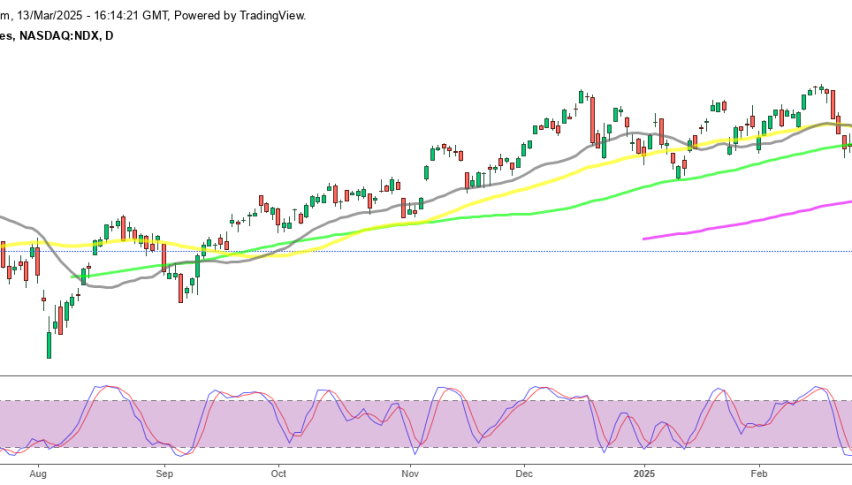Weak August ISM Mftg. Leaves 50 bps FED Rate Cut on the Table
Traders have been trying to figure out how low the FED rate will be by the end of 2024, which has been driving prices in most markets. The FOMC has left the monetary policy on inflation and employment, with Jerome Powell leaving the door open for a 50 bps rate cut in this month’s meeting. Today’s ISM manufacturing report showed weakness in this sector, and gave contradicting signals for the FED, with new orders falling, while prices increased.

Overall, the US manufacturing sector remains in contraction territory, with most indicators reflecting ongoing challenges as the figures for August indicated. While some areas, such as prices paid and employment, showed improvement, others like new orders and production continue to face downward pressure. The odds of a 50 bps FED rate cut in this meeting have gone up to 40% almost, from around 30% previously.
US August ISM Manufacturing Index Report
- Manufacturing Index: 47.2 points, slightly below the expected 47.5 points and up from July’s 46.8 points.
- Prices Paid: Increased to 54.0 points, up from the previous 52.9 points.
- Employment: Improved to 46.0 points from 43.4 points prior.
- New Orders: Dropped to 44.6 points, down from 47.4 points, marking the lowest level since May 2023.
- Production: Decreased to 44.8 points from the previous 45.9 points.
- Supplier Deliveries: Declined to 50.5 points, down from 52.6 points.
- Inventories: Rose to 50.3 points, significantly higher than the previous 44.5 points.
- Backlog of Orders: Increased slightly to 43.6 points from 41.7 points.
- New Export Orders: Slight decrease to 48.6 points from 49.0 points prior.
- Imports: Increased to 49.6 points from 48.6 points previously.
The new orders index paints a bleak picture for the manufacturing sector, indicating further difficulties in the months ahead for the sector, as captured by the latest S&P Global survey. Here’s a summary of comments from the report:
- Chemical Products: The sector is seeing a noticeable slowdown in business activity, leading to staffing and production rationalization. Earlier optimism about future growth has faded.
- Transportation Equipment: Backlogs have been reduced by half, with strong invoicing but significantly slower incoming orders. There’s hope for a pick-up in orders by the fourth quarter and into 2025, though a slow third quarter is expected.
- Food, Beverage & Tobacco Products: After a slow start to the year, there’s now a mild increase in year-over-year sales volume, with more steady growth expected.
- Computer & Electronic Products: The business outlook is positive, with a strong recovery from the earlier slowdown in electronics anticipated for the second half of the year.
- Machinery: New order intake remains sluggish, despite an increase in inquiries. Customers have received capital approval for equipment purchases but are holding off until the fourth quarter, reflecting election-related uncertainty. A strong end-of-year and a rise in backlogs into 2025 are anticipated.
- Fabricated Metal Products: Orders are in a slow, steady decline, with the trend likely to continue through year-end. Downsizing is happening through attrition, though no layoffs have occurred. Some customer programs have increased orders for specific parts, keeping some production areas busy.
- Miscellaneous Manufacturing: New orders remain strong, with slightly reduced inventories as a result. Supplier lead times are beginning to increase in certain categories.
- Paper Products: Business is cooling, with expectations for a rebound not likely until post-election. Environmental cost concerns related to energy are affecting the 2025 budget planning.
- Primary Metals: The order book remains strong for now, with preparations underway for a potential slowdown in U.S. auto sales. Overtime is being run to meet demand, but hiring hourly employees is challenging, with some leaving soon after starting.
- Wood Products: High interest rates are reducing consumer spending on large discretionary items, negatively impacting sales potential. However, pent-up demand for housing and remodeling is growing, though interest rate cuts may not come soon enough to impact this year.
These insights reflect a mixed but generally cautious outlook, with many sectors showing signs of stabilization but still facing significant headwinds.







